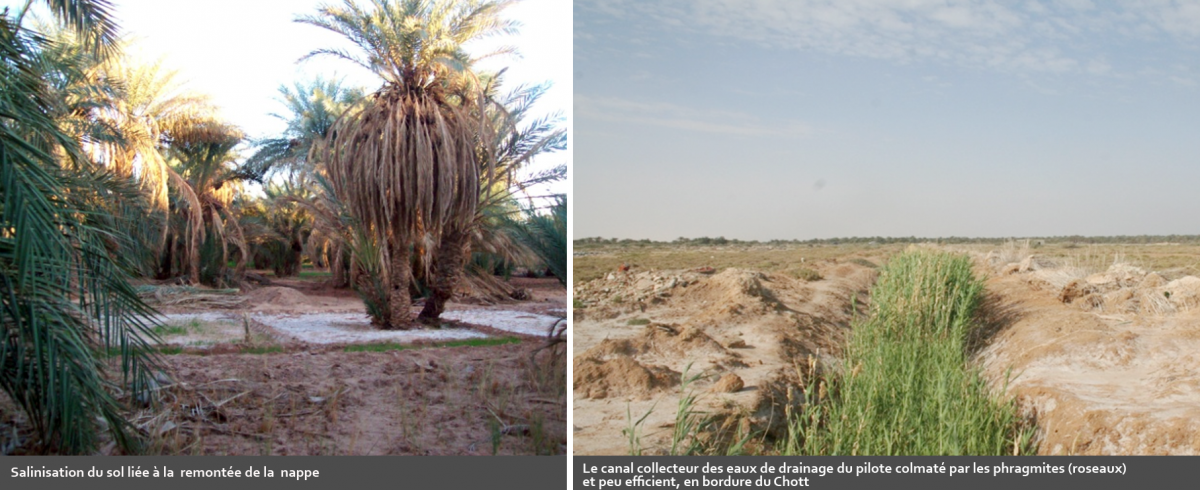Given its low topographic position (edge of chott Ejrid), the pilot plots face two major problems namely hydromorphic soils and salinization, which are accentuated by the rise of the water table level (70cm depth) and having a salinity of more than 8g/l (electrical conductivity of 11.69sm/cm) which limits the soil intensification and reduces productivity in a situation of an overall gradual abandonment of intensive agriculture.

The main factors behind this situation are:
- the poor quality of irrigation water;
- the low topographic position;
- the inefficiency of the existing drainage system.
The pilot zone is already equipped with an irrigation system consisting of a concrete séguia of 3403 length which was constructed in 2005 within the framework of the APIOS project (Amélioration des Périmètres Irrigués des Oasis du Sud). However, this irrigation system is relatively insufficient for a better water management. Irrigation in the plot is carried out by submersion in boards of different dimensions according to the land use by the herbaceous layer. Boards are connected to the principal irrigation network by in-ground channels.
It should be noted that the water drainage system installed within the APIOS project is not located inside the oasis farms. It is rather the individual traditional ditches that ensure the evacuation of excess irrigation water by gravity. But, due to an irregular and lack of maintenance of these ditches, the evacuation of excess irrigation water is slow and not ensured in all cases which consequently led to the rise of the aquifer level and soil salinization.
The flow rate of water consecrated for the irrigation of the entire Jedida oasis is of 104l/s on a total surface of 138 ha (i.e. 0.75l/s for one ha). Irrigation is carried out for 12 to 15 hours per ha for 20 days. This irrigation pattern allows an acceptable intensification of at least fruit trees and forage crop. A better water management, an improvement of irrigation techniques, and the construction of individual water storage basins, would easily allow an intensive cultivation of vegetables and the introduction of a localized irrigation system which requires putting water under pressure.
